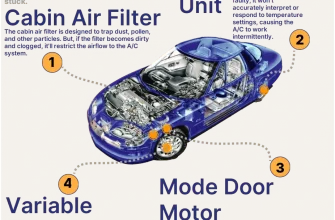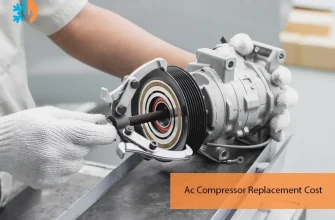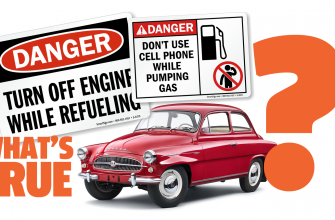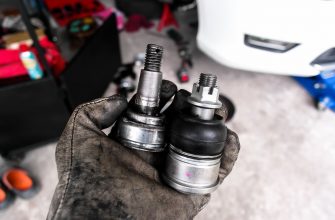Finding sugar in your gas tank can feel like a nightmare for any car owner. This malicious act can cause significant damage to your vehicle, leaving you feeling helpless and frustrated. But fear not! In this guide, we will explore effective methods for removing sugar from your gas tank and restoring your vehicle to its former glory.
- Understanding the Problem
- Step-by-Step Guide to Remove Sugar
- Step 1: Assess the Damage
- Step 2: Gather Your Tools
- Step 3: Safely Drain the Gas Tank
- Step 4: Clean the Fuel System
- Step 5: Refill and Test
- Preventing Future Incidents
- Regular Maintenance Checks
- Invest in Fuel Additives
- Secure Your Vehicle
- Educate Yourself and Others
- What to Do if You Suspect Contamination Again
- Understanding Your Vehicle
- Regular Fluid Checks
- Stay on Top of Tire Maintenance
- Keep it Clean
- Engage in Preventive Maintenance
- Stay Informed and Adapt
Understanding the Problem
First, let’s address why sugar in a gas tank is a serious issue. When sugar is introduced to gasoline, it doesn’t dissolve; instead, it clumps together and can obstruct fuel lines, filters, and injectors. This can lead to a myriad of problems, including:
- Engine misfires
- Decreased fuel efficiency
- Complete engine failure
Identifying the presence of sugar in your gas tank is crucial. Symptoms may include difficulty starting the engine, sputtering during acceleration, or the vehicle stalling altogether.
Step-by-Step Guide to Remove Sugar
If you suspect that your gas tank has been contaminated with sugar, follow these steps to remedy the situation:
Step 1: Assess the Damage
Before taking action, assess the extent of the contamination. If you notice sugar granules in your fuel filter or have difficulty starting your vehicle, it’s time to take action.
Step 2: Gather Your Tools
You’ll need a few tools to help you with this process:
- Wrench set
- Fuel line disconnect tool
- Fuel filter replacement (if necessary)
- Draining pan
- Protective gloves and eyewear
Step 3: Safely Drain the Gas Tank
To remove sugar from your gas tank, you will need to drain the contaminated fuel. Here’s how:
- Ensure the vehicle is parked on a level surface and turn off the ignition.
- Locate the fuel tank and remove the fuel pump access panel (if applicable).
- Using a siphon pump, carefully drain the gasoline into a clean container or draining pan.
- Dispose of the contaminated fuel according to local regulations.
Step 4: Clean the Fuel System
Once the gas tank is drained, you need to clean the fuel system:
- Remove the fuel filter and check for sugar buildup. Replace it if necessary.
- Use the fuel line disconnect tool to detach the fuel lines.
- Inspect the lines for sugar residue and clean them thoroughly.
- Consider using a fuel system cleaner to flush out any remaining debris.
Step 5: Refill and Test
After cleaning, it’s time to refill your gas tank with fresh gasoline:
- Reconnect the fuel lines and install a new fuel filter if needed.
- Fill the tank with high-quality gasoline.
- Start the engine and let it idle for a few minutes to ensure everything is functioning properly.
Preventing Future Incidents
Once you’ve successfully removed sugar from your gas tank, it’s essential to take steps to prevent future incidents:
- Keep Your Vehicle Secure: Park in well-lit areas and consider using anti-theft devices.
- Regular Maintenance: Keep your vehicle in good condition and regularly check the fuel system.
- Be Aware: Stay vigilant and report any suspicious activity around your vehicle.
While finding sugar in your gas tank can be alarming, taking swift action can minimize damage and restore your vehicle’s performance. By following the steps outlined above, you’ll not only remove the sugar but also protect your vehicle from future threats. Remember, prevention is key—stay aware and keep your car safe!
After successfully identifying and removing sugar from your gas tank, you might be wondering what additional steps you can take to ensure the longevity and reliability of your vehicle. Here are some practical tips and preventive measures to keep your car running smoothly and avoid future contamination issues.
Regular Maintenance Checks
Routine maintenance is essential for every vehicle owner. Schedule regular inspections of your car’s fuel system, which can help catch potential issues before they escalate. Pay attention to:
- Fuel Filters: Replace your fuel filter according to the manufacturer’s recommendations. A clean filter can help prevent debris from entering your fuel system.
- Fuel Lines: Check for leaks or signs of wear that could allow contaminants into your gas tank.
- Fuel Quality: Use high-quality fuel from reputable vendors to minimize the risk of contamination.
Invest in Fuel Additives
Consider using fuel additives designed to clean the fuel system. These products can help remove deposits and reduce the risk of future clogs caused by contaminants like sugar. Look for additives that:
- Enhance fuel combustion
- Improve engine performance
- Protect against corrosion and deposits
Secure Your Vehicle
Your car’s security is paramount. Taking preventive measures can deter potential tampering:
- Park Wisely: Choose secure, well-lit areas for parking, especially at night. Avoid leaving your car in isolated or high-risk locations.
- Use Anti-Theft Devices: Invest in steering wheel locks or car alarms that can act as a deterrent against vandalism and tampering.
- Stay Vigilant: Always be aware of your surroundings and report suspicious activity to local authorities.
Educate Yourself and Others
Knowledge is power. Understanding the signs of fuel contamination can help you act quickly if it happens again. Share this information with friends and family to help them protect their vehicles, too. Consider organizing a local workshop or informational meetup to discuss vehicle care and security.
What to Do if You Suspect Contamination Again
In the unfortunate event that you suspect sugar or another contaminant in your gas tank again, here’s a quick checklist of actions to take:
- Monitor your vehicle for any signs of trouble, such as poor performance or starting issues.
- Consider consulting a professional mechanic if you’re not comfortable addressing the issue yourself.
- Document any symptoms and the steps you’ve taken, which can help the mechanic diagnose the problem more effectively.
While dealing with sugar in your gas tank can be a daunting experience, taking proactive measures can significantly reduce the likelihood of it happening again. By maintaining your vehicle, securing it against potential threats, and staying informed, you can enjoy a smoother, safer driving experience. Remember, your vehicle is a significant investment—taking care of it ensures it serves you well for years to come!
As a vehicle owner, ensuring the longevity and efficiency of your car goes beyond immediate fixes like removing sugar from the gas tank. It’s about cultivating habits and adopting practices that keep your ride running smoothly for the long haul. Here are some more essential tips to help you maintain the health of your vehicle:
Understanding Your Vehicle
Every car has its unique quirks and requirements. Familiarize yourself with your vehicle’s specifications and maintenance schedule. This knowledge enables you to:
- Stay ahead of routine services, such as oil changes and tire rotations.
- Recognize warning lights on the dashboard and understand their implications.
- Know the right type of fuel and oil to use, which can significantly affect performance.
Regular Fluid Checks
Fluid levels play a crucial role in the overall functionality of your vehicle. Regularly checking and maintaining these fluids can prevent complications:
- Engine Oil: Essential for lubrication, engine oil should be checked monthly and changed as recommended by your vehicle’s manufacturer.
- Coolant: This fluid prevents overheating. Ensure it’s at the proper level and replace it periodically.
- Brake Fluid: Keep an eye on this crucial fluid, as its level directly impacts braking efficiency.
Stay on Top of Tire Maintenance
The tires are your vehicle’s only contact with the road, making their maintenance vital. Here’s how to keep them in prime condition:
- Check tire pressure regularly and maintain it at the recommended level for safety and fuel efficiency.
- Rotate your tires every 5,000 to 7,500 miles to ensure even wear.
- Monitor tread depth; replace tires that are worn down to ensure optimal traction.
Keep it Clean
Not only does a clean vehicle look great, but it also helps prevent rust and corrosion:
- Wash Regularly: Clean your car’s exterior to remove dirt, grime, and harmful substances that can lead to deterioration.
- Interior Care: Vacuum and clean the interior to maintain the upholstery and dashboard, enhancing your driving experience.
- Waxing: A good wax can protect your paint job from the elements and keep your car looking shiny and new.
Engage in Preventive Maintenance
Preventive maintenance can save you time, money, and stress. Consider these practices:
- Keep a maintenance log detailing services performed, which can help track your vehicle’s health over time.
- Invest in a quality pair of jumper cables and a basic tool kit for emergency situations.
- Consider a roadside assistance plan for peace of mind during road trips or long drives.
Stay Informed and Adapt
The automotive industry is constantly evolving, with new technologies and maintenance practices emerging. Stay updated by:
- Reading automotive blogs and following relevant social media accounts for tips and trends.
- Joining local car clubs or online forums to share experiences and advice with other car enthusiasts.
- Attending workshops or webinars focused on vehicle maintenance and safety.
Maintaining your vehicle is a multifaceted endeavor that requires attention, knowledge, and a proactive approach. By integrating these practices into your routine, you not only enhance your vehicle’s performance but also extend its lifespan. Remember, a well-maintained vehicle is not just a mode of transport; it’s a key to freedom and exploration on the open road. Embrace the journey, care for your ride, and let every journey be a smooth one!









I never thought about the implications of sugar in a gas tank until now. This article has opened my eyes, and I feel more confident about handling potential issues.
This article is a lifesaver! I had no idea sugar could cause such damage to my car. The step-by-step guide is super helpful and easy to follow.
I found this guide extremely informative. It’s alarming to think about sugar in the gas tank, but now I feel prepared to tackle the problem if it arises.
Fantastic guide! The symptoms of sugar contamination were spot on with what I experienced last month. Now I know exactly what steps to take next time.
Great article! I appreciate the detailed instructions on how to remove sugar from a gas tank. It really eases my mind knowing what steps to take.
This is such an important topic for car owners. The clarity of the information provided here makes it so much easier to understand the risks and solutions.
Very useful information! I
I love how thorough this article is! It not only explains the problem but also provides practical solutions that anyone can follow. Highly recommend!